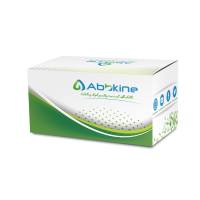Bradford Assay
互联网
The bradford dye-binding assay is a colorimetric assay for measuring total protein concentration. It involves the binding of Coomassie Brilliant blue to protein.
There is no interference from cations nor from carbohydrates such as sucrose. However, detergents such as sodium dodecyl sulfate and triton x-100 can interfere with the assay, as well as strongly alkaline solutions.
General Overview of Procedure:
- Dilute 5x Bradford Reagent (BioRad) 4:1 with water and run through a gravity filter.
- Get a 96-well ELISA plate (Limbro microtitration plate).
- Turn on machine to allow bulb to warm up (approx. 10 min. before use).
- Prepare standards.
- Plate standards in triplicate (10 uL per well). Leave column 1 blank, begin plating in column 2.
- Plate samples in triplicate (10 uL per well). Since your standard curve is from 0-1 mg/mL (for BSA), your samples should be in this range. Taking an O. D. reading on your sample and generalizing that 1 O. D.=1 mg/mL is a good way to get a ballpark value. Dilute your samples appropriately, and if you don't know the concentration of protein make several samples of various dilutions.
- Add 200 uL of diluted Bradford reagent to each well, and let stand 5 minutes.
- Insert the 595 nm. filter into the machine. Set the plate on the reader. Press "blank" and after the machine gives a printout of the blank reading, press "start". The reading is complete when the plate slides back out from underneath the reader.
- Use the results to graph the standard curve (Axes are commonly labeled as y=A, 600 nm and x=mg/mL). Use the curve and data from bradford to determine unknown protein concentration.
Preparation of Standard
A set of standards is created from a stock of protein whose concentration is known. The Bradford values obtained for the standard are then used to construct a standard curve to which the unknown values obtained can be compared to determine their concentration. Use a protein as your standard that most closely resembles the protein you are assaying. BSA and IgG are typical standards used to construct the curve. For BSA, use 0-1 mg/mL as your standard curve concentration; for IgG, use 0-1.6 mg/mL.
Example of typical standards created from BSA stock (1 mg/mL), to give a standard curve from 0-1 mg/mL:
Sample #1 (0.0 mg/mL): 0 uL BSA + 30 uL buffer.
Sample #2 (0.2 mg/mL): 6 uL BSA + 24 uL buffer.
Sample #3 (0.4 mg/mL): 12 uL BSA + 18 uL buffer.
Sample #4 (0.6 mg/mL): 18 uL BSA + 12 uL buffer.
Sample #5 (0.8 mg/mL): 24 uL BSA + 6 uL buffer.
Sample #6 (1.0 mg/mL): 30 uL BSA + 0 uL buffeer.








